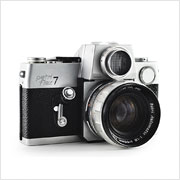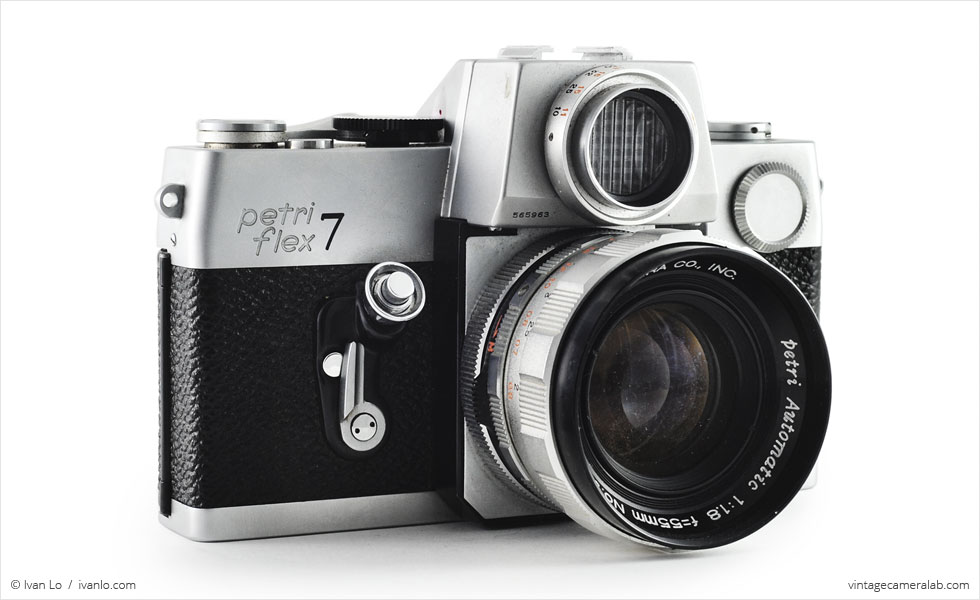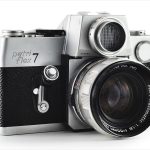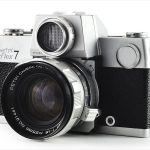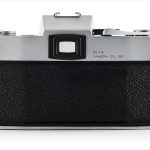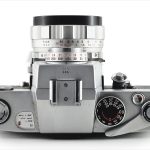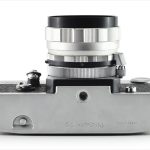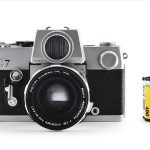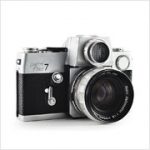Petri Flex 7 Specifications
| Manufacturer: | Petri Camera Company, Inc. |
| Origin: | Japan |
| Made in: | Japan |
| Introduced: | 1964 |
| Type: | Single Lens Reflex |
| Lens Mount: | Petri Breech-Lock Mount |
| Format: | 135 Film |
| Dimensions: | 15.1 x 9.8 x 6.9 cm (body only) |
| 15.1 x 9.8 x 9.1 cm (with lens) |
Petri Flex 7 Overview
The Petri Flex 7 is a single lens reflex camera introduced by Petri in 1964 and is claimed to be the world’s first SLR with a fully integrated cadmium sulfide light meter. Known by many as “the poor man’s Contarex” for its superficial (and most likely intentional) resemblance to the Zeiss Ikon Contarex “Bullseye”, the Flex 7 was marketed as Petri’s flagship model and was supposedly meant to compete with the nigh untouchable Nikon F. Advertisements put special emphasis on the camera’s auto-indexing feature (meaning that the lens’s aperture setting would be automatically relayed to the body), the fact that its integrated light meter had an in-viewfinder indicator, and how Petri’s mastery of mass production meant high quality cameras at low prices.
Perhaps the most eye-catching feature of the Petri Flex 7 is its cadmium sulfide light meter which sits on the camera’s pentaprism directly above the lens. Surrounding the round light meter cell is a ring with which to set your current film speed and just behind it on top of the viewfinder is a cold shoe. On the user’s left hand side of the top plate is a light meter power indicator and a film rewind knob. The shutter speed dial (with speeds ranging from one to 1/1000 second and Bulb), frame counter, and film advance lever are on the other side. An unconventionally angled shutter button can be found on the camera’s front below the “Petri Flex 7” badge and above the self-timer lever. On the opposite side of the bespoke breech-lock lens mount are a small flash sync port and battery door. The film rewind release button and standard tripod socket are on the bottom plate.
After watching auctions for the better part of a year, I bought this Petri Flex 7 on eBay and it came with extras like a leather case, manual, and even the original bill of sale. Thanks to the included documentation, I know that this particular Petri Flex 7 was purchased brand new on August 27, 1965 by a Mr. James R. Davis at Amsterdam’s Schiphol Airport shortly before his flight to New York City. He paid $113.70 (about $880 in today’s money) at the Capi duty-free shop which is still in business today. According to the 1965 sales catalog, the store also offered 35mm slide projectors, binoculars, tape recorders, and typewriters in addition to a huge range of professional and consumer grade cameras.
Find your very own Petri Flex 7 on eBay.
McKeown, James M. and Joan C. McKeown’s Price Guide to Antique and Classic Cameras, 2001-2002. (Grantsburg, WI, USA: Centennial Photo Service, 2001), p 405, 713.
“Petri Flex 7,” Camera Wiki, http://camera-wiki.org/wiki/Petri_Flex_7
